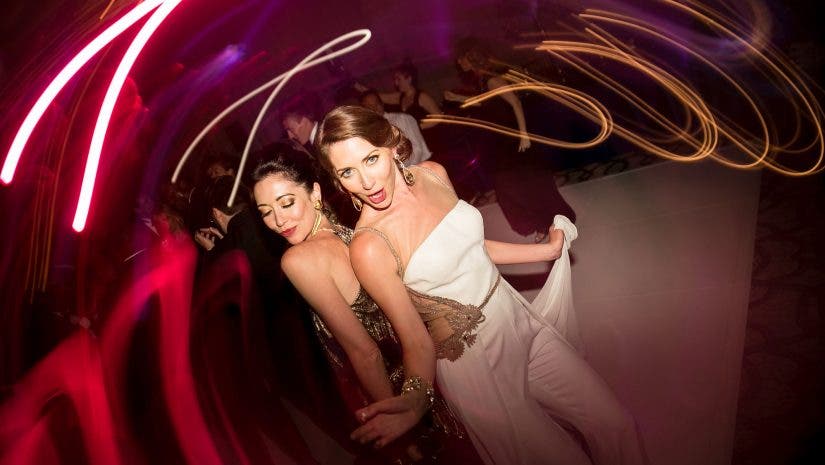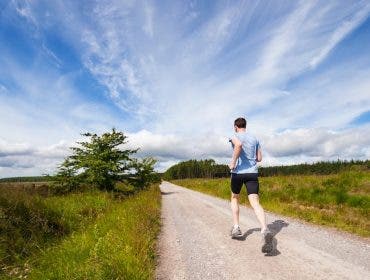When looking for new techniques to try in photography, we can often find inspiration in movies. Many filmmaking techniques can be readily adapted to photography, from lighting and composition to everything in between. One of these techniques, in particular, has proven to be quite impactful and requires special consideration when used in either medium. I’m talking about the Dutch angle. Filmmakers and photographers have long debated whether its use qualifies as artistic vs. cliche, but no one can deny its impact. Whether or not you find yourself a fan of the Dutch angle, knowing what it is, why it’s used, and when you might use it effectively in your own photos will make you a better photographer.
What is a Dutch Angle?

The term “Dutch angle” originates from its use in classic German films, and it’s actually a mispronunciation of the “Deutsch” angle. As for what it is, a Dutch angle in photography and cinema describes a shot in which the camera is tilted to one side, either the right or the left so that the horizon does not run parallel with the bottom of the frame. The degree to which you tilt the camera is your call, but extreme tilts will render stronger reactions from the viewer. Editing software includes tools specifically designed to help us straighten the horizon, but we won’t need them here.
Why Use a Dutch Angle?
Because we’re used to keeping a level horizon, Dutch angles can feel awkward to look at (and shoot). Filmmakers like Alfred Hitchcock have used Dutch angle shots to great effect, often to create a sense of tension or anxiety. It’s because of the reaction we have to seeing Dutch angle photos that we need to use the technique intentionally. Use it too often and the effect will either turn viewers away from your work or the impact will fade. If you use it sparingly, however, in a context that makes sense, it can prove a powerful visual tool. Many sports, architecture, fashion, and street photographers have figured this out.
Dutch Angle | What is It and When to Use It

Tip 1: Establish the Mood
Much has been made of the effect of using Dutch angles in photography and cinema. As mentioned above, Dutch angles tend to evoke a sense of tension or uneasiness. Knowing this, we can use moody lighting and build our shot around a Dutch angle to establish a mood. The tricky part here, however, is recognizing the right moment during a typical shoot to use it.
In the context of a suspenseful Hitchcock film, you can see how certain scenes might call for Dutch angles to impact the viewer’s experience. If you’re capturing photos for a project that hopes to capture this vibe, you know a Dutch angle will deliver and fit perfectly in context. But what about during a wedding or a family portrait session? While a Dutch angle will not always (or more accurately, will rarely) be a go-to for capturing these genres, it can help you quickly establish other moods in various settings.
Use a Wide Angle and Get into the Action
If we use a wide-angle lens and move closer to our subjects, Dutch angle portraits can make us feel like we’re actually present in the scene, taking part in the action. They’re not perfectly straight and don’t feel quite as composed. Plus, depending on the subject matter, we can use a Dutch angle to emphasize a happier mood and not give our viewers anxiety.

Dutch angles work especially well to pump up the excitement with dancing shots (especially with a shutter drag and off-camera flash) during wedding receptions or walking/running shots with couples during engagement sessions. We can also use them to capture candid moments between family members to give them a playful vibe.
Tip 2: Draw Attention to Your Subject

As photographers, we’re always looking for ways to draw attention to our subjects. Dutch angle camera shots have proven especially effective for this purpose. For example, we can shoot from low angles in front of buildings or other tall structures and converging verticals as leading lines to guide the viewer to our subject. When used in street or fashion photography, a Dutch angle can allow us to capture full-length portraits at close distances, giving us a dynamic perspective while also concealing distracting elements in the scene.
Tip 3: Consider the Sequence

A single Dutch angle shot among a sequence of more traditionally composed photos will stand out. They don’t look like the other shots, compositionally, and can be used to make a statement within a larger sequence of shots. Adversely, a series of Dutch angle shots surrounding a standard angle shot will draw more attention to the standard shot. Stories typically feature a fluctuation (or rise and fall) in action, and the best sequences of photos, whether on a blog, across album spreads, or in a wall art collage, will follow this pattern as well.
Tip 4: Enhance the Shot

Once you’ve figured out the basics for working Dutch angle shots into your session, consider upping the ante and enhancing your shots. You can do this in a number of ways.
- Vary the tilt degree: Depending on the degree of your tilt, whether it’s a subtle or extreme angle, your Dutch angle shot can remain relatively calm or feel very unsettling. If you’re shooting an engagement photo, a slight angle should help the photo stand out without sending it into Hitchcock territory.
- Compare a deep vs. shallow depth of field: A shallow depth of field will render a different feeling than a deep depth of field, especially as we separate the subject from an off-kilter backdrop. Experiment with different depths of field to see the effect it has on your portraits.
- Adjust the camera level: Typically, when we photograph people at eye level, we feel more connected to them. We can use this to connect or disconnect from our subjects when using a Dutch angle.
- Combine with other techniques: We can also combine a Dutch angle with other techniques. Pairing a Dutch angle photo with off-camera flash to add a unique twist to a nighttime couples portrait. Or, use a shutter drag (see the dancing shot above) to add motion and further enhance our shot.
Tip 5: Use with Other Compositional Tools
One thing I’ve learned about composition in photography over the years is that stacking compositional tools makes for better pictures. While the Dutch angle itself is a powerful compositional tool, it need not be used in isolation. Instead, we can pair the Dutch angle with other tools like leading lines to create more visually compelling portraits.
Conclusion
I hope you found this article on Dutch angles helpful. While it isn’t a technique we’ll use often, it helps to know how to use it to impact our portraiture. Dutch angles work extremely well when it comes to getting our viewer’s attention and eliciting a visceral reaction. So long as we use it in moderation, it’s a great little technique to add to our toolbox. If you ever find that a Dutch angle isn’t working, don’t feel obligated to get it into the session. Go ahead and rethink the shot and try something else.






